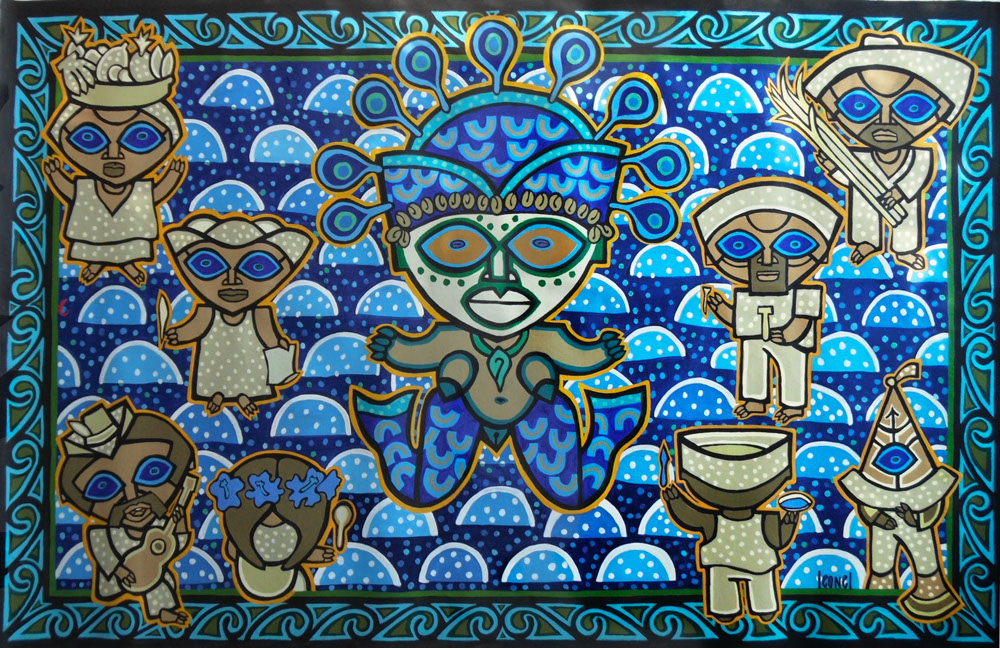
Leonel with his embodiments of the pantheon of the liturgy of the Regla de Ocha or Santería associates beauty with harmony of the physiognomy with the brilliance of composition in the style of medieval Catalan art and the naive art of the land of the Yorubas. These are the ritual elements that distinguish them: the stars and the four winds of Oya, the willful warrior in her multicolor flowering world, armed with arrows, deer and tigers in shades of ocher; the greens of Ochosi, the hunter, paired with Oggún, the warrior; Elegguá with gourds, toys, tops, kites, the tireless child of the fates; Changó the warrior, lover with his Oché thunder axes, horse, palm fronds, surrounded in red and white by his eternal loves—Oya, Ochún, and Obba.
Natalia Bolívar, 2000
Leonel con sus realizaciones del panteón de la liturgia de la regla de Ocha o Santería asocia la belleza con la armonía de la fisonomía con la brillantez de una composición a la usanza medieval catalana y el arte naif del país de los yorubas. Sus elementos rituales que los distinguen: las estrellas y los cuatros vientos de Oya, la voluntariosa y guerrera, en su multicolor mundo de la floración, armada de flechas, venados y tigres, en gamas de ocres, verdes de Ochosi, el cazador desdoblamiento de Oggún el guerrero; de Elegguá con güiros, juguetes, trompos y papalotes, incansable niño de los destinos; Changó guerrero, amante, con su Oché, su caballo, sus palmas, rodeado, en el rojo y blanco, de sus amores eternos: Oya, Ochun y Obba.
Natalia Bolívar, 2000
web design: Los Fieras
proyecto y curaduría:/project concept and curator: Alejandro de la Fuente
Agradecemos a la Fundación Ford por su apoyo para este proyecto /
/ Thanks to Ford Foundation for their support for this project"



